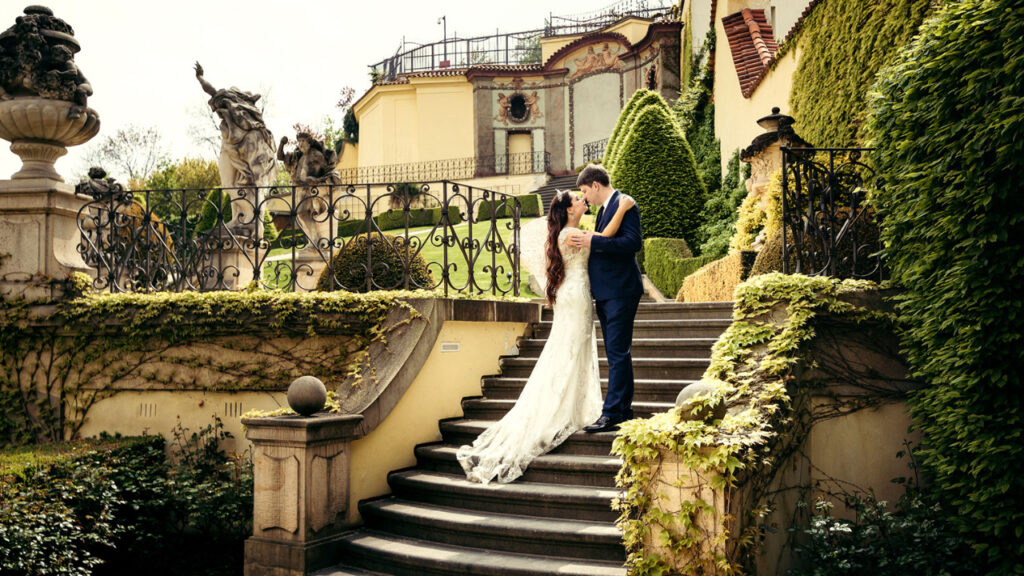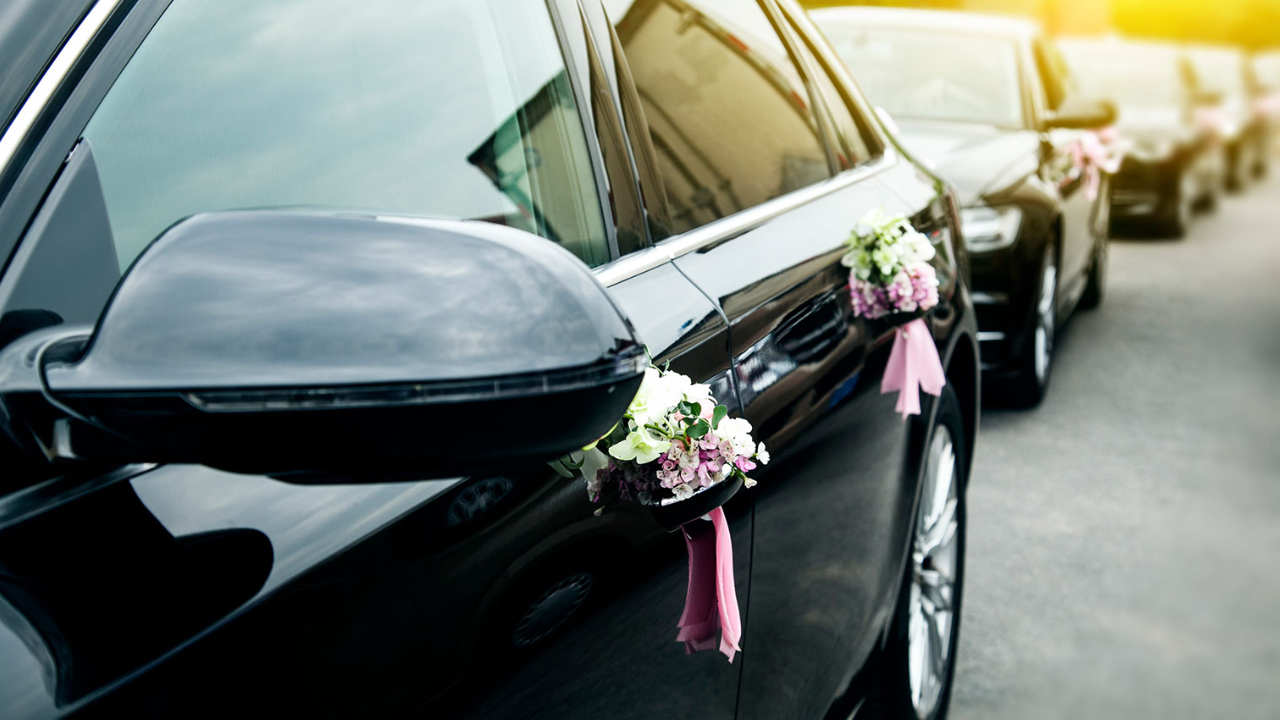Weddings, renowned as days of joy and unity, can often be a complicated tangle of logistics and planning. For those opting for the romance of a European wedding, managing transport and other logistic details is crucial to ensure a smooth, memorable day. We’ve carefully curated this guide, focusing on three primary elements: guest transportation, the couple’s transportation, and the general logistical intricacies involved in a European wedding.
▶️ Read also: Choosing the perfect European wedding venue
Organising your guests’ arrival in a foreign European land
A significant part of the logistics in a European wedding involves coordinating the arrival of your guests, particularly if they’re travelling from abroad.
Initiating the travel plans: Invitations and information
Firstly, communicate the essential details to your guests as early as possible. This can be done via ‘save-the-date’ cards or initial invitations, giving guests plenty of time to plan their journey and, if needed, make necessary visa arrangements. The European Schengen area, for example, has specific visa requirements for non-European travellers, and processing times can vary.
Once you’ve selected your venue, provide your guests with comprehensive details about the location. This should include not just the address but also details about the nearest airports or train stations, estimated travel times, and local transportation options such as taxis, buses, or car rental services. This allows your guests to plan their trip more effectively.
Accommodation and local transport
Accommodation is another crucial aspect. Depending on your budget and venue, you might be able to book rooms in bulk at a nearby hotel or resort, possibly securing a group discount. This not only makes it easier for your guests but also simplifies transportation logistics to and from the venue.
If bulk booking isn’t feasible, provide a list of recommended accommodations in varying price ranges. Be sure to include details on how to reach the wedding venue from each accommodation. Some European cities, such as Amsterdam, have an excellent network of trams and buses, while others, such as Florence, are more compact and can be navigated on foot or by taxi.
The icing on the cake: Coordination and assistance
While it’s customary to assign a point person or a team to handle guest queries, you can elevate your guests’ experience by providing more unique and personalised assistance.
For instance, you could create a welcome pack, either digital or physical, tailored to your guests’ needs. This could include travel-size essentials, a customised city guide with your favourite spots, a local SIM card for easy communication, and a small phrasebook containing essential phrases in the local language.
Consider hiring a local tour guide for guests arriving early or staying post-wedding. This can be a delightful way for guests to explore the local culture and history, beyond the typical tourist spots. If the wedding is in a city like Prague, an architectural tour could reveal the city’s Gothic, Baroque, and Art Nouveau treasures. For a wedding in Andalusia, a guided tapas tour could be a gastronomic delight.

If your wedding takes place in a more remote location or countryside, where public transport may not be as frequent or easily accessible, think about arranging private transport services. A shuttle service that runs a few times a day to nearby towns or cities can give guests the freedom to explore without the stress of navigating unfamiliar transport systems.
▶️ Read also: Dealing with dietary requirements at a European wedding
You could also arrange unique experiences tailored to your location. For instance, if your wedding takes place in Tuscany, you might organise a local wine tasting event. If in the Swiss Alps, a guided hike could be a memorable experience.
These tailored experiences and thoughtful assistance don’t just solve logistical challenges but also create memorable moments for your guests, making your wedding a truly unforgettable event.
On the big day: ensuring comfort, security and convenience
A memorable wedding experience is not just about the ceremony itself, but also about the entire journey that your guests undertake. Ensuring comfortable and seamless transportation for your guests can go a long way in setting the tone for your special day.
As we said, earlier, start by providing a comprehensive guide along with your invitations that details how to reach the venue. This guide should include an easy-to-understand map, parking details, and significant landmarks near the venue. This will help guests who are unfamiliar with the area to navigate their way easily.
Next, consider their transportation during their stay. Coordinating a shuttle service from a central meeting point or hotel accommodation to the venue can be a thoughtful gesture. This helps minimise the stress of individual driving, tackles potential parking issues, and takes into account varying drink-driving laws across Europe. For example, the legal blood alcohol limit in France is 0.05% (0.5 g/l, if you have held your licence for more than three years) or in Italy, while in England and Wales, it’s 0.08%.
Additionally, take into account local traffic conditions. Some European cities like Rome are known for heavy traffic. To avoid guests getting stuck in traffic, consider scheduling your wedding during non-peak hours, or opt for smaller, more manoeuvrable transport options like minibuses or small coaches.
Bride and groom transportation: Merging tradition and style
One last question: how will the bride and groom be transported? Indeed, it should not only symbolise style and elegance but also reflect the couple’s personality and the spirit of the destination. While classic cars remain a popular choice, considering more unique modes of transportation can add a distinct touch to your European wedding.
In Italy, for instance, you could switch the vintage Fiat 500 for a Vespa scooter, creating an authentic and romantic Italian cinematic scene as you weave through quaint streets. Ensure you hire a professional driver if you’re not comfortable driving the Vespa yourself, especially considering the hustle and bustle of cities like Rome or Naples.
For a wedding set in the countryside of France, such as Provence or the Loire Valley, consider a horse-drawn carriage. Not only does it add a fairy-tale touch, but it also allows you to enjoy the beautiful landscape at a leisurely pace.
If you’re tying the knot in a coastal town in Greece, like Santorini, consider arriving at your venue on a traditional donkey, as is customary on the island. Alternatively, a boat entrance could add a dramatic touch if your venue is by the sea or a large lake, such as Lake Como in Italy or Lake Bled in Slovenia.
And if you’re planning a city wedding, say in London, how about an iconic double-decker bus? It’s spacious enough to accommodate large wedding dresses and offers a touch of British charm. It can also double as a sightseeing tour for your guests if the journey from the ceremony to the reception venue passes landmarks such as the Tower Bridge, Buckingham Palace, or the London Eye. While these options undoubtedly add flair and fun, comfort and reliability should not be compromised. Ensure the chosen mode of transportation suits your needs, aligns with local regulations, and guarantees a stress-free and safe journey. Most importantly, it should resonate with your style, making your entrance and exit unforgettable.
With diligent planning and a touch of creativity, navigating the complexities of transport and logistics can contribute to a seamlessly orchestrated, unforgettable European wedding. It’s all about ensuring each journey, like every moment of your special day, is a cherished memory in itself.






